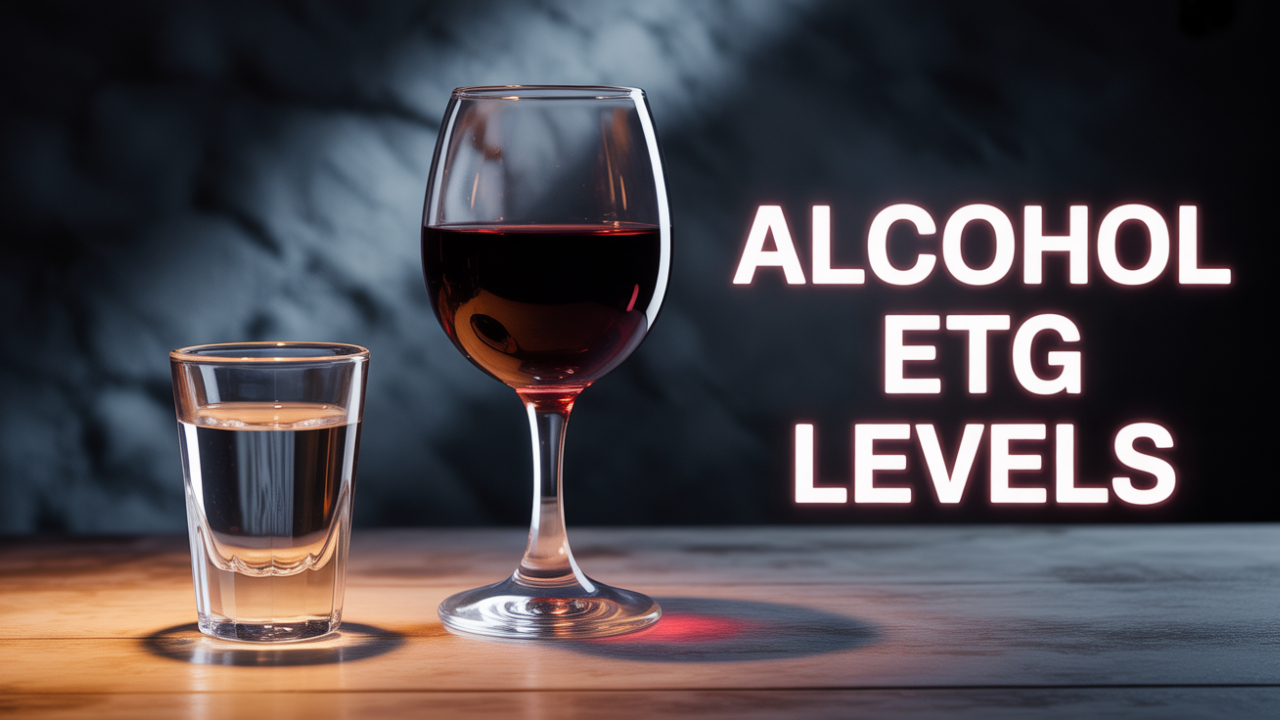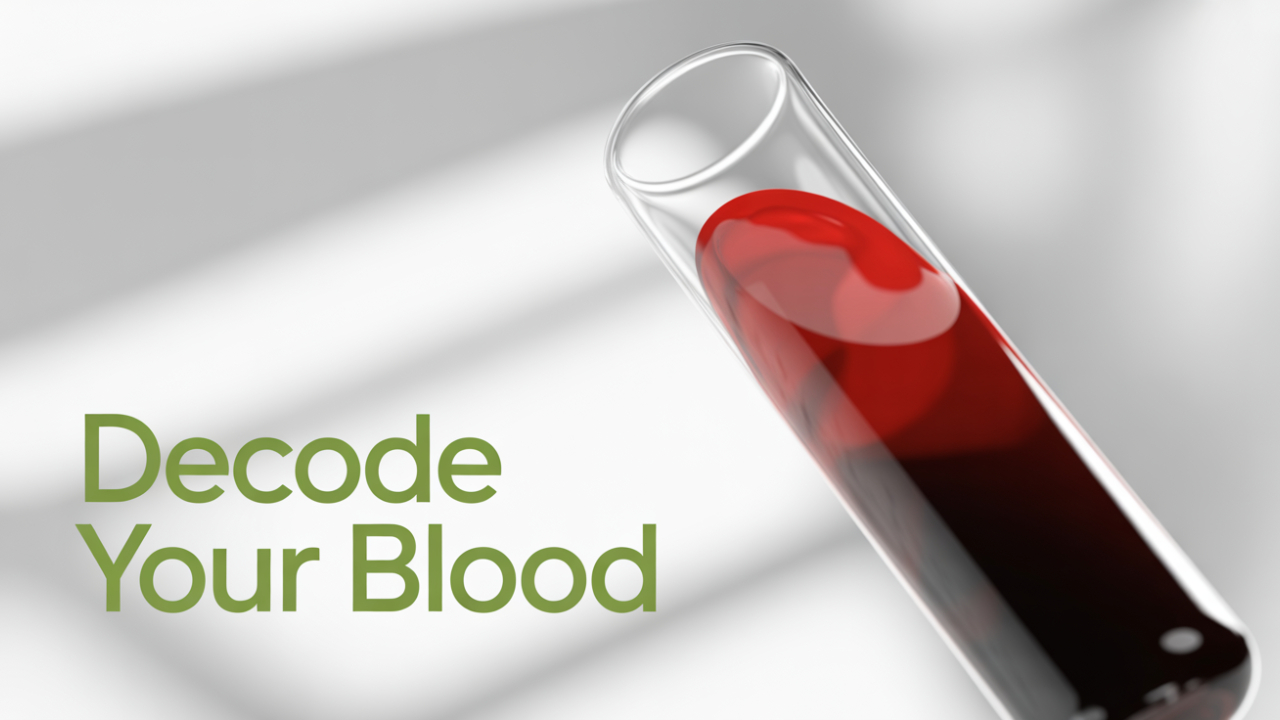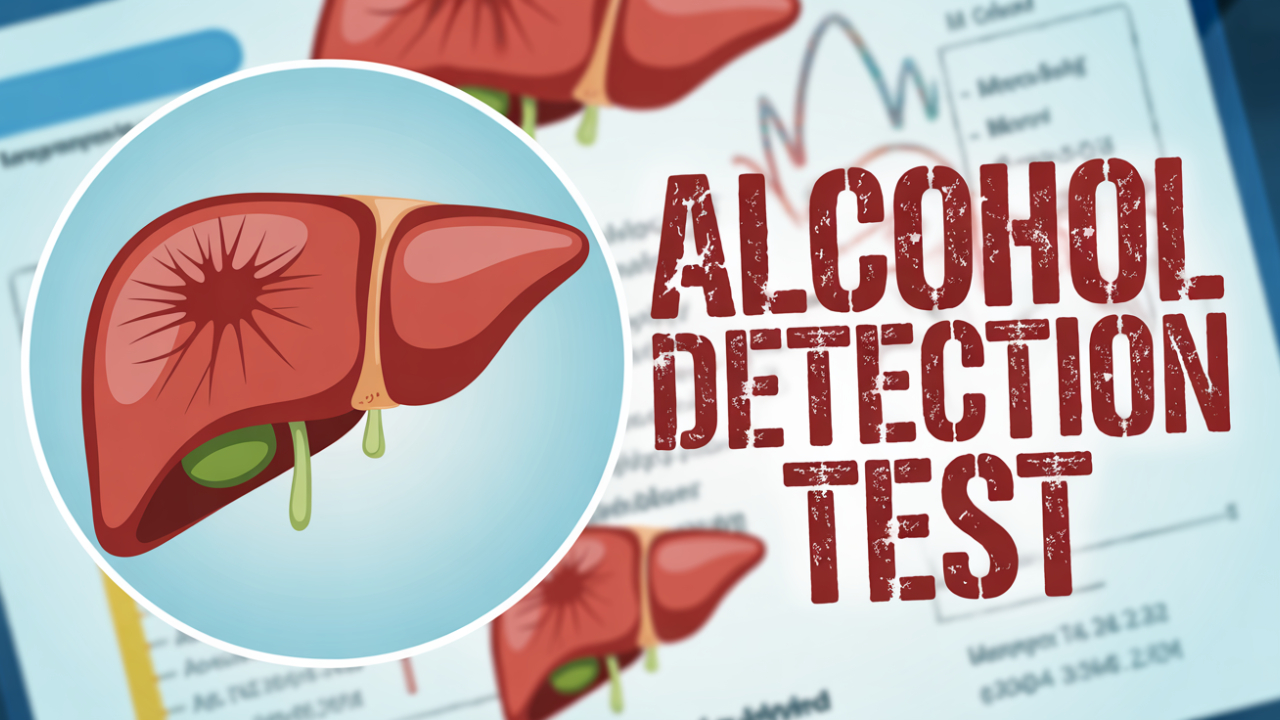Understanding ETG Levels Per Drink
EtG Levels Per Drink
Estimated EtG Levels Per Drink
Number of Drinks | Estimated EtG Level Range (ng/mL) | Detection Window in Urine |
|---|---|---|
1 | 100–500 ng/mL | 24–48 hours |
2–3 | 300–1,000 ng/mL | 48–72 hours |
4–5 | 800–1,500+ ng/mL | 72–80+ hours |
6+ (Binge drinking) | 1,500–5,000+ ng/mL | Up to 5 days in some cases |

EtG Levels Per Type of Alcoholic Beverage
Type of Beverage | Standard Serving Size | Approx. Alcohol Content | Equivalent to # of Drinks | Estimated EtG Level Range (ng/mL) |
|---|---|---|---|---|
Beer (Regular, 5%) | 12 oz (355 mL) | ~14 grams ethanol | 1 drink | 100–500 ng/mL |
Wine (Table wine, 12%) | 5 oz (148 mL) | ~14 grams ethanol | 1 drink | 100–500 ng/mL |
Liquor (Vodka, Whiskey, 40%) | 1.5 oz (44 mL) | ~14 grams ethanol | 1 drink | 100–500 ng/mL |
Malt Liquor (7%) | 8–9 oz (240–270 mL) | ~14 grams ethanol | 1 drink | 100–500 ng/mL |
Fortified Wine (Port, 17%) | 3.5 oz (103 mL) | ~14 grams ethanol | 1 drink | 100–500 ng/mL |
Cocktails (Varies) | 5–8 oz (148–237 mL) | Depends on recipe | 1–3 drinks+ | 300–1500+ ng/mL |
Energy + Alcohol Drinks | 12–16 oz | Variable | 1–2 drinks | 200–1000+ ng/mL |
Binge (Multiple drinks) | Varies | 6+ drinks in short period | 6+ drinks | 1,500–5,000+ ng/mL |
What Does EtG Stand for On a Drug Test?
How To Calculate EtG Levels?
Alcohol EtG Calculator
BAC Calculator
Is EtG Calculator Accurate?
- Individual health
- Liver function
- Hydration
- Frequency and amount of alcohol consumption
EtG Calculator Urine Test

EtG Blood Test
EtG Hair Follicle Test
What Is a Normal EtG Level?
- 100 ng/mL – very sensitive; used in substance abuse treatment and criminal justice
- 500 ng/mL – balances sensitivity with real-world application
- 1000 ng/mL – reduces chance of a false positive from incidental exposure
EtG Detection Timeline Chart
Test Type | Detection Window |
|---|---|
Urine | 24–80 hours |
Blood | 8–24 hours |
Saliva | Up to 48 hours |
Hair Follicle | Up to 90 days |
EtG Cutoff Levels for Probation
Factors Affecting Detection Timeframes
- Amount of alcohol consumed
- Health and liver function
- Type of alcoholic beverage
- Metabolic rate
- Body mass
- Hydration levels
- Co-occurring drug use
Metabolism Rates Affecting Detection Times
Factors Affecting Detection Timeframes
- Amount of alcohol consumed
- Health and liver function
- Type of alcoholic beverage
- Metabolic rate
- Body mass
- Hydration levels
- Co-occurring drug use

Correlations Between Alcohol Consumption Levels and Results
- 1–2 drinks: detectable for 24–48 hours
- 3–5 drinks: up to 72 hours
- 6+ drinks: possibly 80+ hours
Understanding False Positives
Everyday Products That Can Cause False Positives
- Hand sanitizers
- Mouthwash
- Household cleaning supplies
- Cough syrup or medications with ethanol
- Fermented foods like kombucha
Best Ways to Avoid a False Positive on an EtG Test
- Alcohol-based hand sanitizers
- Mouthwash with ethanol
- Over-the-counter cold medications
- Fermented foods
- Exposure to cleaning agents
Final Thoughts
FAQs About The Ethyl Glucuronide Urine Test
1. Can diet or nutrition affect the outcome of an EtG urine test?
Yes, your nutrition can influence urine composition, including hydration levels and creatinine concentration, which are factors labs check to validate samples. However, nutrition does not directly produce ethyl glucuronide or ethyl sulfate—these metabolites only form when alcohol is consumed. Still, poor hydration or extreme diets could potentially affect drug test reliability by diluting the sample or altering its chemical balance.
2. How is ethyl glucuronide detected in urine?
Ethyl glucuronide (EtG) is a byproduct of alcohol metabolism and is excreted through the urine. It is detected using immunoassay or LC-MS/MS methods during a drug test. The presence of EtG indicates recent alcohol consumption, making it a useful marker for programs that require abstinence verification, such as court monitoring or addiction treatment.
3. What’s the difference between ethyl glucuronide and ethyl sulfate?
Both ethyl glucuronide (EtG) and ethyl sulfate (EtS) are direct biomarkers of alcohol use, but they are different metabolites. EtG forms when ethanol combines with glucuronic acid, while EtS results from a reaction with sulfate. Testing both substances improves accuracy, as EtS is less likely to yield false positives from incidental alcohol exposure (like hand sanitizer), making them complementary markers in urine-based drug test panels.
4. Can over-the-counter medications trigger a false positive?
While most over-the-counter drugs won’t create ethyl glucuronide or ethyl sulfate, some products containing alcohol (like liquid cold medicines or certain herbal tinctures) might trigger a low-level positive. To reduce this risk, individuals subject to testing should avoid alcohol-containing products and inform the test administrator of any medications or supplements—especially when being tested for legal, medical, or employment-related drug test purposes.








